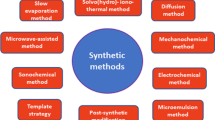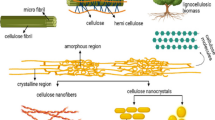Abstract
Purification of dye-laden water endures to be immensely challenging owing to the occurrence of highly persistent and non-biodegrade dyes, which pose a potential threat to humans, flora, fauna, and environment. The environmental problem was addressed by facile fabrication of poly [(2-acrylamido-2-methyl-1-propane sulfonic acid-co-acrylamide-co-acrylic acid)] hydrogels cross-linked via sodium borate (SB), graphene oxide (GO) or N,N-methylenebisacrylamide (MBA) for elimination of crystal violet (CV) from water. The capability of water uptake was recorded in terms of per cent (%) swelling, which exhibited the attainment of swelling equilibrium in 24 h with corresponding maximum per cent swelling of 2830 for HBR. The sorption capability of the hydrogels was investigated as a function of dosage, contact time, concentration, pH, and temperature. Relative to its other counter parts, the sodium borate cross-linked hydrogels demonstrated highest sorption capability, i.e. 44 mg.g−1 owing to the greater number of available sites. The sorption of CV onto the hydrogels followed pseudo-second-order kinetics and Freundlich isotherm models. The process of CV sorption onto the hydrogels was endothermic and spontaneous accompanied with entropy rise after sorption.








Similar content being viewed by others
References
Akkaya MÇ, Emik S, Güçlü G, İyim TB, Özgümüş S (2009) Removal of basic dyes from aqueous solutions by crosslinked-acrylic acid/acrylamidopropane sulfonic acid hydrogels. J Appl Polym Sci 114:1150–1159
Al-Bastaki N (2004) Removal of methyl orange dye and Na2SO4 salt from synthetic waste water using reverse osmosis. Chem Eng Process Process Intensif 43:1561–1567
Dahlan N, Lee L, Pushpamalar J, Ng S (2019) Adsorption of methylene blue onto carboxymethyl sago pulp-immobilized sago waste hydrogel beads. Int J Environ Sci Technol 16:2047–2058
Dursun D, Sengul F (2006) Waste minimization study in a solvent-based paint manufacturing plant. Resour Conserv Recycl 47:316–331
Golob V, Vinder A, Simonič M (2005) Efficiency of the coagulation/flocculation method for the treatment of dyebath effluents Dyes Pig 67:93-97
Gonçalves J, Santos J, Rios E, Crispim M, Dotto G, Pinto L (2017) Development of chitosan based hybrid hydrogels for dyes removal from aqueous binary system. J Mol Liq 225:265–270
González N, Marquès M, Nadal M, Domingo JL (2019) Occurrence of environmental pollutants in foodstuffs: a review of organic vs. conventional food. Food Chem Toxicol 125:370–375
Guerra E, Alvarez-Rivera G, Llompart M, Garcia-Jares C (2018) Simultaneous determination of preservatives and synthetic dyes in cosmetics by single-step vortex extraction and clean-up followed by liquid chromatography coupled to tandem mass spectrometry. Talanta 188:251–258
Hamdaoui O, Naffrechoux E (2007) Modeling of adsorption isotherms of phenol and chlorophenols onto granular activated carbon: part I. Two-parameter models and equations allowing determination of thermodynamic parameters. J Hazard Mater 147:381–394
Hoffmann MR, Martin ST, Choi W, Bahnemann DW (1995) Environmental applications of semiconductor photocatalysis. Chem Rev 95:69–96
Jawad AH, Abdulhameed AS (2020) Mesoporous Iraqi red kaolin clay as an efficient adsorbent for methylene blue dye: adsorption kinetic, isotherm and mechanism study. Surf Interfaces 18:100422
Kumar KV, Ramamurthi V, Sivanesan S (2005) Modeling the mechanism involved during the sorption of methylene blue onto fly ash. J Coll Interface Sci 284:14–21
Kundakci S, Üzüm ÖB, Karadağ E (2008) Swelling and dye sorption studies of acrylamide/2-acrylamido-2-methyl-1-propanesulfonic acid/bentonite highly swollen composite hydrogels. React Funct Polym 68:458–473
Kyi PP, Quansah JO, Lee C-G, Moon J-K, Park S-J (2020) The removal of crystal violet from textile wastewater using palm kernel shell-derived biochar. Appl Sci 10:2251
Li Z et al (2020) Adsorption of congo red and methylene blue dyes on an ashitaba waste and a walnut shell-based activated carbon from aqueous solutions: experiments, characterization and physical interpretations. Chem Eng J 388:124263
Lim SJ, Kim T-H (2015) Combined treatment of swine wastewater by electron beam irradiation and ion-exchange biological reactor system. Sep Purif Technol 146:42–49
Maitra J, Shukla VK (2014) Cross-linking in hydrogels-a review. Am J Polym Sci 4:25–31
Mashkoor F, Nasar A (2020) Magnetized Tectona grandis sawdust as a novel adsorbent: preparation, characterization, and utilization for the removal of methylene blue from aqueous solution. Cellulose 27:2613–2635
Nagajyothi P, Prabhakar Vattikuti S, Devarayapalli K, Yoo K, Shim J, Sreekanth T (2020) Green synthesis: photocatalytic degradation of textile dyes using metal and metal oxide nanoparticles-latest trends and advancements Critic Rev. Environ Sci Technol 50:2617–2723
Özay Ö (2009) S, Ekici, Y. Baran, N. Aktaş, and N, Şahiner Wat Res 43:4403
Pang X et al (2020) Preparation and characterization of a novel mountain soursop seeds powder adsorbent and its application for the removal of crystal violet and methylene blue from aqueous solutions. Chem Eng J 391:123617
Patil SR, Sutar SS, Jadhav JP (2020) Sorption of crystal violet from aqueous solution using live roots of Eichhornia crassipes: Kinetic, isotherm, phyto and cyto-genotoxicity studies Environ Technol Innovation:100648
Pavia DL, Lampman GM, Kriz GS, Vyvyan JA (2014) Introduction to spectroscopy. Cengage learning
Rai HS, Bhattacharyya MS, Singh J, Bansal T, Vats P, Banerjee U (2005) Removal of dyes from the effluent of textile and dyestuff manufacturing industry: a review of emerging techniques with reference to biological treatment Critic Rev. Environ Sci Technol 35:219–238
Raza N, Raza W, Gul H, Azam M, Lee J, Vikrant K, Kim K-H (2020) Solar-light-active silver phosphate/titanium dioxide/silica heterostructures for photocatalytic removal of organic dye. J Clean Prod 254:120031
Rehman TU, Bibi S, Khan M, Ali I, Shah LA, Khan A, Ateeq M (2019a) Fabrication of stable superabsorbent hydrogels for successful removal of crystal violet from waste water. RSC Adv 9:40051–40061
Rehman TU, Shah LA (2019) Rheological investigation of GO doped p (APTMACl) composite hydrogel Z Phys Chem 1
Rehman TU, Shah LA, Khan M, Irfan M, Khattak NS (2019b) Zwitterionic superabsorbent polymer hydrogels for efficient and selective removal of organic dyes. RSC Adv 9:18565–18577
Saini RD (2017) Textile organic dyes: polluting effects and elimination methods from textile waste water. Int J Chem Eng Res 9:121–136
Shah LA (2019) Developing Ag-tercopolymer microgels for the catalytic reduction of p-nitrophenol and EosinY throughout the entire pH range. J Mol Liq 288:111045
Shah LA, Haleem A, Sayed M, Siddiq M (2016) Synthesis of sensitive hybrid polymer microgels for catalytic reduction of organic pollutants. J Environ Chem Eng 4:3492–3497
Shah LA et al. (2020) In-situ stabilization of silver nanoparticles in polymer hydrogels for enhanced catalytic reduction of macro and micro pollutants. Z Phys Chem 1
Shah LA, Rehman TU, Khan M (2019) Synthesis of graphene oxide doped poly (2-acrylamido-2-methyl propane sulfonic acid)[GO@ p (AMPS)] composite hydrogel with pseudo-plastic thixotropic behavior. Polym Bull:1–15
Shinde UP, Yeon B, Jeong B (2013) Recent progress of in situ formed gels for biomedical applications. Prog Polym Sci 38:672–701
Shu J, Wang Z, Huang Y, Huang N, Ren C, Zhang W (2015) Adsorption removal of Congo red from aqueous solution by polyhedral Cu2O nanoparticles: kinetics, isotherms, thermodynamics and mechanism analysis J Alloys Compd 633:338–346
Siddiqui MM et al. (2015) Comparison of MR/ultrasound fusion–guided biopsy with ultrasound-guided biopsy for the diagnosis of prostate cancer JAMA 313:390–397
Singh K, Gupta A, Sharma A (2016) Fly ash as low cost adsorbent for treatment of effluent of handmade paper industry-Kinetic and modelling studies for direct black dye. J Clean Prod 112:1227–1240
Sinha V, Chakma S (2019) Advances in the preparation of hydrogel for wastewater treatment: a concise review. J Environ Chem Eng 7:103295
Subhan H, Alam S, Shah LA, Ali MW, Farooq M (2020) Sodium alginate grafted poly (N-vinyl formamide-co-acrylic acid)-bentonite clay hybrid hydrogel for sorptive removal of methylene green from wastewater. Coll Surf A:125853
Tan S, Jiang T, Ebrahimi A, Langrish T (2018) Effect of spray-drying temperature on the formation of flower-like lactose for griseofulvin loading. Eur J Pharm Sci 111:534–539
Vadivelan V, Kumar KV (2005) Equilibrium, kinetics, mechanism, and process design for the sorption of methylene blue onto rice husk J Colloid Interface Sci 286:90–100
Yuan Z et al (2019) Preparation of a poly (acrylic acid) based hydrogel with fast adsorption rate and high adsorption capacity for the removal of cationic dyes. RSC Adv 9:21075–21085
Zarei S, Sadeghi M, Bardajee GR (2018) Dye removal from aqueous solutions using novel nanocomposite hydrogel derived from sodium montmorillonite nanoclay and modified starch Int J. Environ Sci Technol 15:2303–2316
Zhou S, Di Paolo C, Wu X, Shao Y, Seiler T-B, Hollert H (2019) Optimization of screening-level risk assessment and priority selection of emerging pollutants–the case of pharmaceuticals in European surface waters. Environ Int 128:1–10
Acknowledgements
L. A. Shah is highly thankful to Higher Education Commission (HEC) of Pakistan for financial support under research grant no.: NRPU-HEC-7309.
Author information
Authors and Affiliations
Corresponding author
Ethics declarations
Conflict of interest
No conflict of interest exists to declare.
Additional information
Editorial responsibility: Samareh Mirkia.
Supplementary Information
Below is the link to the electronic supplementary material.
Rights and permissions
About this article
Cite this article
Faizan, S., Bakhtawara & Ali Shah, L. Facile fabrication of hydrogels for removal of crystal violet from wastewater. Int. J. Environ. Sci. Technol. 19, 4815–4826 (2022). https://doi.org/10.1007/s13762-021-03454-4
Received:
Revised:
Accepted:
Published:
Issue Date:
DOI: https://doi.org/10.1007/s13762-021-03454-4




